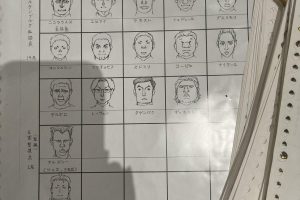Following the second round of the presidential election, reformist candidate Masoud Pezeshkian won the election against anti-Western ultraconservative Saeed Jalili. At a time of deep tensions and shifting alliances, these results will resonate across the region.
The background to the election is – to say the least – complicated. The death of the hawkish Iranian president Ebrahim Raisi in helicopter crash The May coup, coupled with the lack of an obvious successor, has exacerbated deep internal fissures in a country marked by popular protest. Pushed by intense public pressure, the Council of Guardians Iran has allowed a single moderate candidate, Pezeshkian, to stand; but Supreme Leader Ayatollah Ali Khamenei has sought weaken his candidacyand the Iranian government remains dominated by fundamentalists. Most Iranians boycotted the first round. Whether out of anger, apathy or resignation, less than 50% participated in the second round.
The regional landscape is also characterized by confusion. Iranian foreign policy is driven by contradictory impulses. On the one hand, Iranian leaders want something resembling regional stability, both to facilitate the political transition and to help the country cope with crippling Western sanctions. On the other hand, Iran remains a committed member and instigator of the “Axis of Resistance”: a loose network of opportunistic actors that includes Hezbollah in Lebanon, the Houthis in Yemen and Hamas in Gaza and aims to eliminate Israel, expel the United States from the Middle East and disrupt the Washington-led world order.
This tension was manifested in the careful diplomatic quadrille carried out by Iran, Hezbollah and Israel in the months following the start of the Israeli invasion of Gaza. But the advertisement Israeli Prime Minister Binyamin Netanyahu’s announcement last month of plans to scale back operations in Gaza and move forces to the border with Lebanon makes conflict more likely. This explains the increase in rocket attacks against Israel.
The Middle East has never been a model of stability. But recently, it seemed to be heading in the direction of a status quo to some extent more stable. The Abraham Accords (presented in 2020 with the sponsorship of the White House), normalized Israel’s relationship with some Arab states, including the United Arab Emirates and Bahrain, has eased the US decision to pivot its attention from the Middle East to other foreign policy priorities, notably containing China and, from 2022, supporting Ukraine’s defence against all-out Russian invasion. But Israel’s war against Hamas has upset the emerging new balance and sparked a series of clashes across the region.
Last year, Iran also restored diplomatic relations with several Arab states, starting with Saudi Arabia. But this détente was achieved with Xi Jinping’s mediation; and Beijing has since maintained strong ties with Iran. The sale of Iranian oil to China already generates for the Islamic Republic 150 million dollars up to date.
Iran also maintains close links with Russia, which shares its goal of undermining the West’s global dominance. In addition to declaring support for Russia in its war against Ukraine, Iran is helping Dodge Western sanctions, especially in the area of financial and hydrocarbon transactions. Following Raisi’s death, Russian President Vladimir Putin declaredin a note of condolence sent to Khamenei, that he will “always remember” Raisi as “the most wonderful person.”
Iran has taken advantage of the fact that the international community is engrossed with Ukraine, Gaza and the electoral vicissitudes of Europe and the United States to advance its nuclear program. Although it does not appear to have completed the development of nuclear weapons –for the moment–, it has already reached many of the capabilities needed to do so; the risk of proliferation is serious. If the Axis of Resistance has allowed Iran to project power with a degree of impunity, nuclear weapons would allow it to pose a credible threat to the current world order.
The presidential election has mitigated the risk to a certain extent. Pezeshkian is in favour of a more balanced foreign policy and the revival of nuclear diplomacy. This stance earned him the support of former foreign minister Mohammad Javad Zarif, who led negotiations for the now-defunct 2015 Joint Comprehensive Plan of Action, which placed limits on Iran’s nuclear program.
But even Pezeshkian is unlikely to take the political risk of seeking the close up with the United States, especially in view of the growing possibility of an imminent return to the White House of Donald Trump (who abandonment (in 2018 the agreement on the Iranian nuclear program). The possibility that the next Iranian president will try to reach a new nuclear agreement with the international community is practically non-existent.
For now, Iran may decide to perpetuate itself on the nuclear threshold, threatening to arm itself at the first provocation. But it may also happen that one day it decides to make good on its threat and build up an atomic arsenal. The risk of an extension of the conflict in the Middle East (something that, for example, could occur as a result of actions by Israel) looms in the background. In trying to confront this dangerous dynamic, the West must appeal to new and creative ways of thinking, rather than clinging to worn-out strategies. Time is on the side of the mullahs.
Pezeshkian’s victory may not mark the end of the Axis of Resistance and its attempts to overthrow the Western-led world order, particularly as the Iranian president’s influence over his country’s foreign policy is limited. But it may provide an opportunity to erode the group’s cohesion. The problem is that seizing it will require a coherent strategy, something the West is not in a position to formulate at the moment.
© Project Syndicate. https://www.project-syndicate.org/
Activity subsidized by the Secretary of State for Foreign and Global Affairs







![[Img #74683]](https://thelatestnews.world/wp-content/uploads/2024/12/The-main-mistakes-to-avoid-when-betting-on-electronic-sports-150x150.jpg)








Add Comment